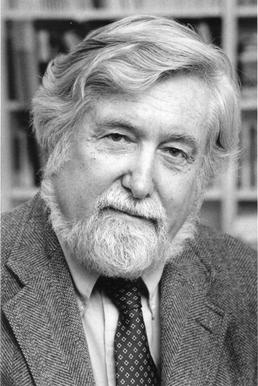Clifford Geertz facts for kids
Quick facts for kids
Clifford Geertz
|
|
|---|---|
 |
|
| Born | August 23, 1926 San Francisco, California, U.S.
|
| Died | October 30, 2006 (aged 80) Philadelphia, Pennsylvania, U.S.
|
| Alma mater | Antioch College (BA) Harvard University (PhD) |
| Known for | Thick description Epochalism |
| Spouse(s) |
Hildred Geertz
(m. 1948; div. 1981) |
| Scientific career | |
| Institutions | University of Chicago Institute for Advanced Study, Princeton, New Jersey |
| Thesis | Religion in Modjokuto: A Study of Ritual Belief In A Complex Society (1956) |
| Doctoral advisor | Talcott Parsons |
| Doctoral students | Lawrence Rosen, Sherry Ortner, Paul Rabinow |
| Influences | Talcott Parsons, Gilbert Ryle, Ludwig Wittgenstein, Max Weber, Paul Ricoeur, Alfred Schütz, Susanne Langer |
| Influenced | Stephen Greenblatt, Quentin Skinner |
Clifford James Geertz (August 23, 1926 – October 30, 2006) was an American anthropologist. He is known for his strong support for and influence on the practice of symbolic anthropology. He was considered for 30 years one of the most important cultural anthropologists in the United States. He was also a retired professor at the Institute for Advanced Study, Princeton, until his death.
Geertz received Honorary Doctorate Degrees from some fifteen colleges and universities, including Harvard University, the University of Chicago and the University of Cambridge. He was married first to the anthropologist Hildred Geertz. After their divorce, he married Karen Blu, also an anthropologist. Clifford Geertz died of complications following heart surgery on October 30, 2006.
Contents
Life and career
Geertz was born in San Francisco on August 23, 1926. He served in the US Navy in World War II from 1943 to 1945. Geertz received a bachelor of arts in philosophy from Antioch College at Yellow Springs, Ohio in 1950 and a doctor of philosophy in anthropology from Harvard University in 1956.
When in Harvard University, he studied at the Department of Social Relations with an interdisciplinary program led by Talcott Parsons. Geertz worked with Parsons, as well as Clyde Kluckhohn, and was trained as an anthropologist. Geertz conducted his first long-term fieldwork together with his wife, Hildred, in Java, Indonesia, a project funded by the Ford Foundation and the Massachusetts Institute of Technology. He also studied the religious life of a small, upcountry town for two-and-a-half years, living with a railroad laborer's family.
After finishing his thesis, Geertz returned to Indonesia, in Bali and Sumatra, after which he would receive his PhD in 1956 with a dissertation entitled Religion in Modjokuto: A Study of Ritual Belief In A Complex Society.
Throughout his life, Geertz received honorary doctorate degrees from around fifteen colleges and universities, including Harvard, Cambridge, and the University of Chicago; as well as awards such as the Association for Asian Studies' (AAS) 1987 Award for Distinguished Contributions to Asian Studies. He was a member of the American Academy of Arts and Sciences, the American Philosophical Society, and the United States National Academy of Sciences. Following his divorce from anthropologist Hildred Geertz, his first wife, he married Karen Blu, another anthropologist.
Teaching
He taught or held fellowships at a number of schools before joining the faculty of the anthropology department at the University of Chicago in 1960. In this period Geertz expanded his focus on Indonesia to include both Java and Bali and produced three books, including Religion of Java (1960), Agricultural Involution (1963), and Peddlers and Princes (also 1963). In the mid-1960s, he shifted course and began a new research project in Morocco that resulted in several publications, including Islam Observed (1968), which compared Indonesia and Morocco.
In 1970, Geertz left Chicago to become professor of social science at the Institute for Advanced Study in Princeton, New Jersey from 1970 to 2000, then as emeritus professor. In 1973, he published The Interpretation of Cultures, which collected essays Geertz had published throughout the 1960s. That became Geertz's best-known book and established him not just as an Indonesianist but also as an anthropological theorist. In 1974, he edited the anthology Myth, Symbol, Culture that contained papers by many important anthropologists on symbolic anthropology. Geertz produced ethnographic pieces in this period, such as Kinship in Bali (1975), Meaning and Order in Moroccan Society (1978; written collaboratively with Hildred Geertz and Lawrence Rosen) and Negara (1981).
Later life
From the 1980s to his death, Geertz wrote more theoretical and essayistic pieces, including book reviews for the New York Review of Books. As a result, most of his books of the period are collections of essays—books including Local Knowledge (1983), Available Light (2000), and Life Among The Anthros (2010), which was published posthumously. He also produced a series of short essays on the stylistics of ethnography in Works and Lives (1988), while other works include the autobiographical After The Fact (1995).
Geertz conducted extensive ethnographic research in Southeast Asia and North Africa. This fieldwork was the basis of Geertz's famous analysis of the Balinese cockfight among others. While holding a position in Chicago in the 1960s, he directed a multidisciplinary project titled Committee for the Comparative Studies of New Nations. As part of the project, Geertz conducted fieldwork in Morocco on "bazaars, mosques, olive growing and oral poetry," collecting ethnographic data that would be used for his famous essay on thick description.
Geertz contributed to social and cultural theory and is still influential in turning anthropology toward a concern with the frames of meaning within which various peoples live their lives. He reflected on the basic core notions of anthropology, such as culture and ethnography.
He died of complications following heart surgery on October 30, 2006. At the time of his death, Geertz was working on the general question of ethnic diversity and its implications in the modern world.
Main ideas and contributions
At the University of Chicago, Geertz became a champion of symbolic anthropology, a framework which gives prime attention to the role of symbols in constructing public meaning. In his seminal work The Interpretation of Cultures (1973), Geertz outlined culture as "a system of inherited conceptions expressed in symbolic forms by means of which men communicate, perpetuate, and develop their knowledge about and attitudes toward life."
Legacy
Geertz's research and ideas had a strong influence on 20th century academia, including modern anthropology and communication studies, and for geographers, ecologists, political scientists, scholars of religion, historians, and other humanists.
Honors
- Association for Asian Studies (AAS), 1987 Award for Distinguished Contributions to Asian Studies
Images for kids
See also
 In Spanish: Clifford Geertz para niños
In Spanish: Clifford Geertz para niños


